Standing majestically on the Giza plateau, the Great Sphinx has captivated humanity for millennia. But what if you could step back in time and witness this ancient wonder in all its original glory? The weathered limestone monument we see today bears little resemblance to the vibrant, awe-inspiring masterpiece that once dominated the Egyptian landscape. Through groundbreaking archaeological research, advanced imaging technology, and meticulous analysis of ancient texts, scientists have pieced together a stunning reconstruction of how this colossal guardian appeared when pharaohs ruled the Nile.
The Sphinx’s Original Golden Complexion
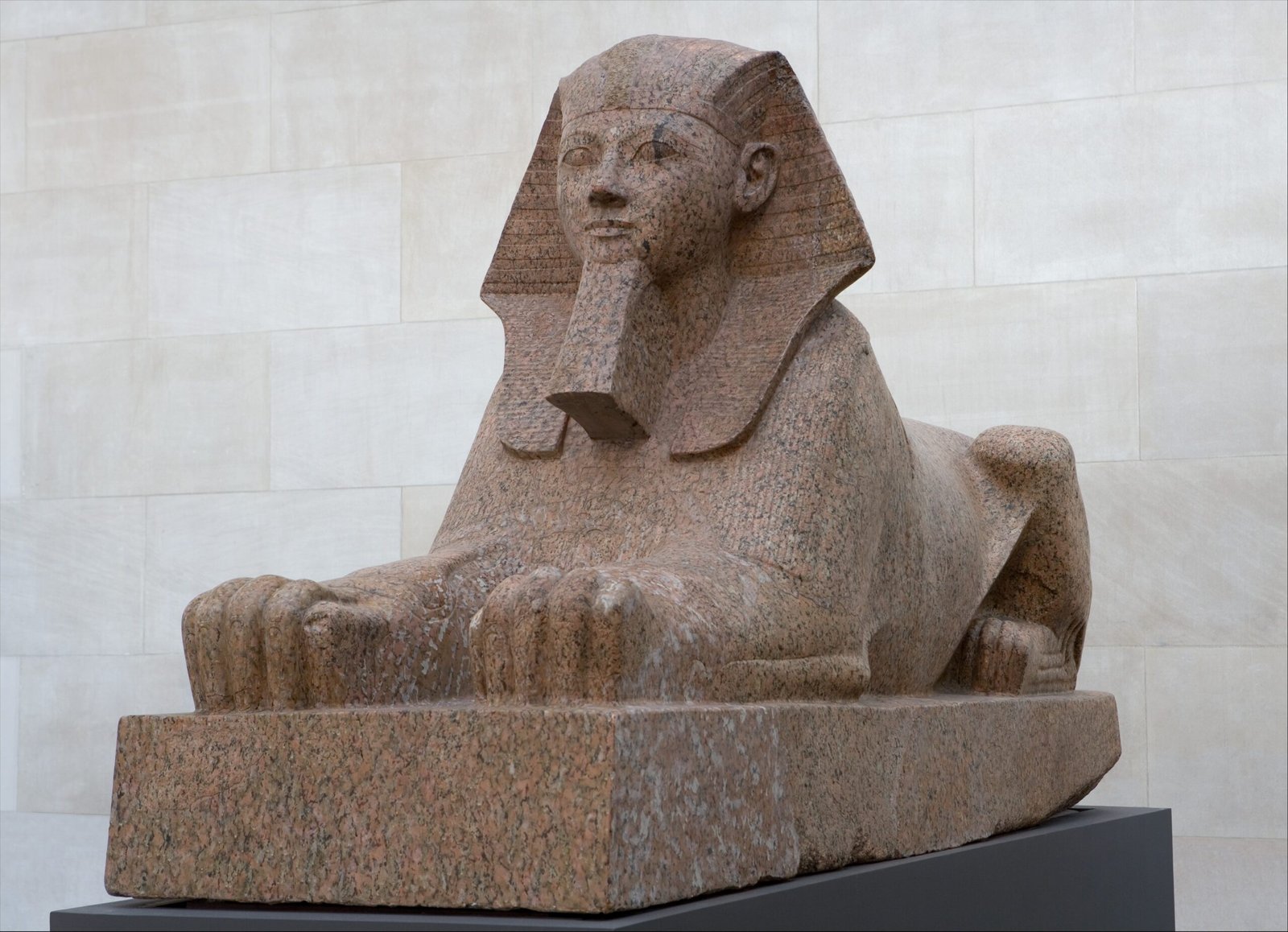
Forget the pale, eroded limestone surface you see today – the Great Sphinx once boasted a rich, golden-yellow complexion that gleamed under the desert sun. Chemical analysis of surviving paint traces reveals that ancient Egyptian artisans covered the entire monument with a thick layer of ochre-based pigments mixed with natural binders.
This golden hue wasn’t merely decorative; it held profound religious significance in ancient Egyptian culture. The color represented the eternal sun god Ra, whose power the pharaoh embodied. When sunlight struck the painted surface, the Sphinx would have appeared to glow with divine radiance, creating an almost supernatural presence that must have left ancient visitors trembling with awe.
The Missing Nose: More Than Just Erosion

The Sphinx’s missing nose remains one of archaeology’s most enduring mysteries, but recent evidence suggests it wasn’t simply a victim of time and weather. High-resolution 3D scanning has revealed tool marks around the nasal area, indicating deliberate destruction rather than natural erosion.
Historical records point to various culprits, from Napoleon’s troops to medieval Islamic iconoclasts, but the most compelling evidence suggests the damage occurred during the 14th century. When the nose was intact, it would have been approximately 5 feet long and perfectly proportioned to the massive face, giving the Sphinx a more human-like and approachable appearance than the stark, noseless visage we know today.
The Elaborate Headdress and Royal Regalia
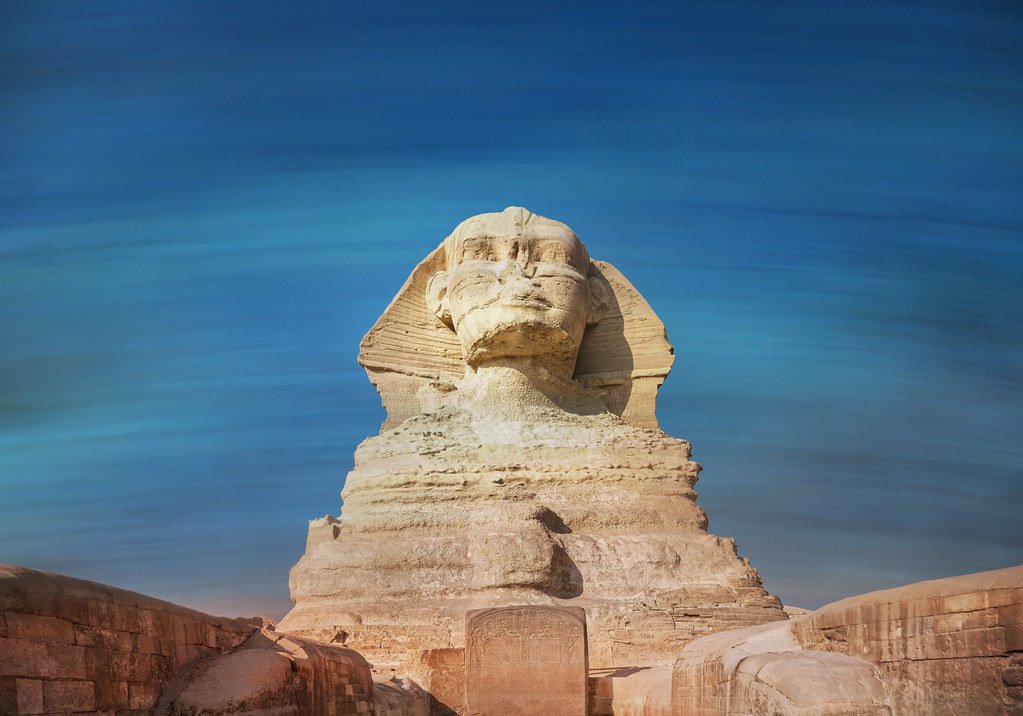
The Sphinx originally wore the traditional nemes headdress, complete with intricate painted stripes in blue and gold. This royal headcloth, identical to those worn by pharaohs, featured detailed geometric patterns that archaeologists have reconstructed from paint fragments found in protected crevices.
A magnificent uraeus – the sacred cobra symbol of royal power – once adorned the center of the headdress, its eyes likely inlaid with precious stones that would have sparkled in the sunlight. The entire headdress was painted with such precision that individual fabric folds and ceremonial details were clearly visible from hundreds of feet away.
The Mysterious Pharaoh’s Beard

Perhaps the most shocking discovery about the Sphinx’s original appearance is the elaborate ceremonial beard that once extended from its chin. Fragments of this massive stone appendage, now housed in the British Museum and Cairo Museum, reveal intricate braiding patterns typical of divine and royal imagery.
The beard wasn’t carved from the original limestone but was added later, possibly during the New Kingdom period around 1400 BCE. When attached, it would have extended nearly 10 feet downward, transforming the Sphinx from a mysterious guardian into an unmistakably divine ruler. The beard’s loss sometime in antiquity dramatically altered the monument’s entire character and gender associations.
Vibrant Facial Features and Expressions

The Sphinx’s face once displayed remarkably lifelike features enhanced by carefully applied paint that brought warmth and humanity to the colossal stone visage. The eyes were outlined in black kohl, just like those of living pharaohs, with detailed pupils and irises that seemed to follow observers as they moved.
Red ochre pigments colored the lips, giving them a natural, almost breathing appearance that must have been startling in its realism. The eyebrows were painted in precise detail, and subtle color variations across the face created shadows and highlights that enhanced the sculpture’s three-dimensional qualities even from great distances.
The Body’s Hidden Decorative Elements

While the Sphinx’s body appears relatively plain today, archaeological evidence suggests it was once adorned with elaborate decorative elements that have since vanished. Paint analysis reveals that the lion’s body was covered in detailed fur patterns, with individual hairs meticulously rendered in various shades of brown and gold.
The chest and shoulders bore painted jewelry and ceremonial collars typical of royal Egyptian art, including intricate geometric patterns and symbolic motifs. These decorative elements would have clearly identified the Sphinx as a divine ruler rather than a simple guardian statue, reinforcing its role as a bridge between the earthly pharaoh and the gods.
The Magnificent Tail Design
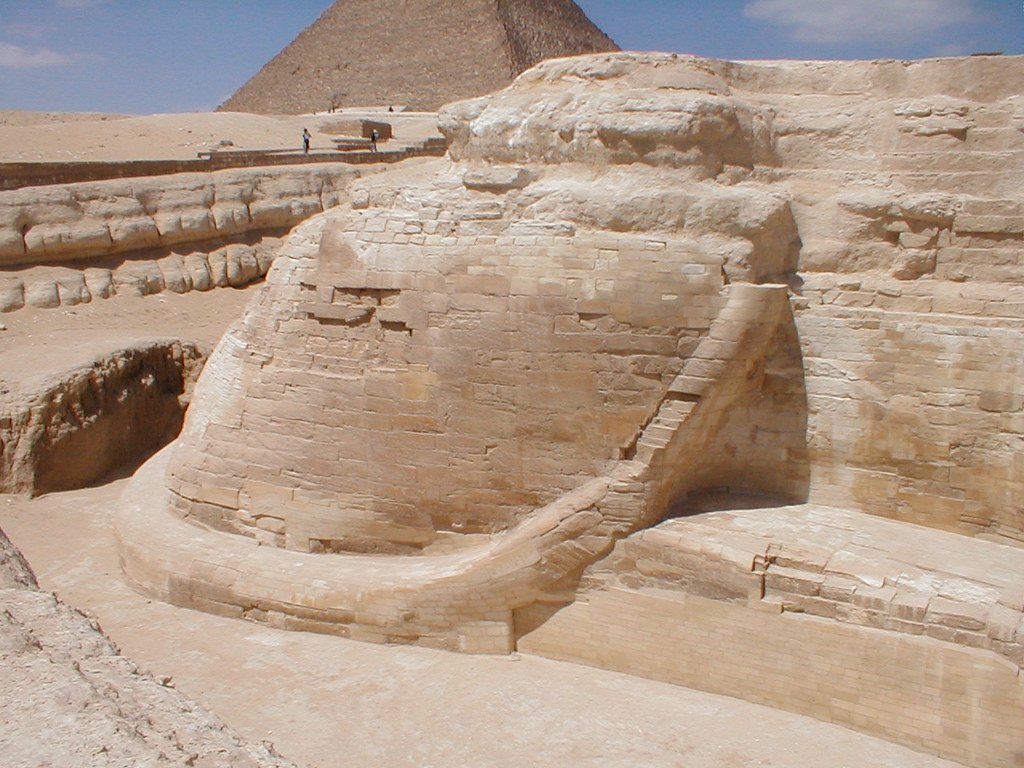
The Sphinx’s tail, now barely visible due to erosion, was once a masterpiece of sculptural art wrapped around the monument’s right side. Ancient reliefs and texts describe elaborate carved patterns that depicted the tail as a living, muscular appendage befitting the king of beasts.
Paint traces suggest the tail was colored in realistic tones that matched the body’s fur patterns, complete with a distinctive tuft at the end. This attention to anatomical detail demonstrates the ancient artisans’ commitment to creating a believable hybrid creature that commanded both fear and reverence from all who beheld it.
The Powerful Paws and Hidden Chambers
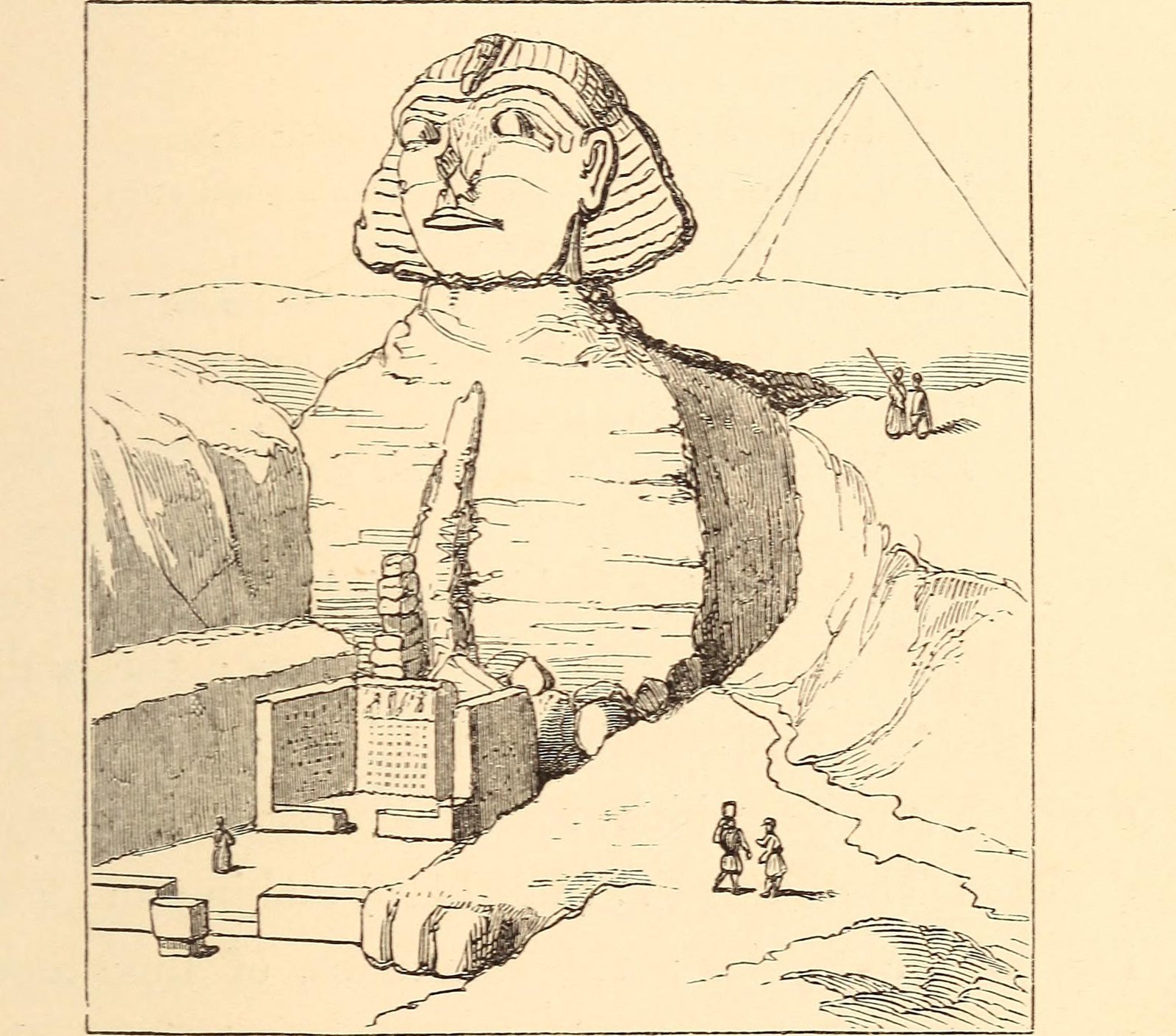
The Sphinx’s massive paws once displayed intricate carved details that are now largely obscured by sand and weathering. Between the front paws, a small temple structure housed religious ceremonies and offerings, its walls covered in colorful hieroglyphic inscriptions that told the story of the monument’s divine purpose.
Recent ground-penetrating radar has revealed additional chambers beneath the paws, some possibly containing artifacts or inscriptions that could provide new insights into the Sphinx’s original appearance and function. These hidden spaces may have been designed to enhance the monument’s mysterious aura, with sound chambers that could amplify priestly voices during religious ceremonies.
The Surrounding Sacred Complex

The Sphinx didn’t stand alone in its ancient glory – it was the centerpiece of an elaborate religious complex that included smaller guardian statues, offering tables, and ceremonial pathways. These surrounding structures were painted in complementary colors that created a cohesive visual experience for ancient visitors.
Palm trees and gardens once surrounded the monument, their greenery providing a stunning contrast to the golden stone and creating a paradise-like setting that emphasized the Sphinx’s role as a divine protector. Water channels and reflecting pools enhanced the magical atmosphere, with the Sphinx’s painted image shimmering in the artificial lakes created by ancient engineers.
The Eyes That Followed the Sun

One of the most remarkable aspects of the Sphinx’s original design was how its painted eyes were positioned to track the sun’s movement across the sky. The pupils were painted at precisely the right angle to create the illusion that the great guardian was constantly watching the horizon, always alert to threats from the east.
This astronomical alignment wasn’t accidental – ancient Egyptian architects calculated the exact positioning to ensure that the Sphinx’s gaze would align with significant celestial events, particularly the spring equinox when the sun would appear to rise directly between the monument’s eyes. This created moments of profound spiritual significance that drew pilgrims from across the ancient world.
The Voice of the Desert Guardian

Ancient texts describe the Sphinx as capable of speech, and acoustic analysis suggests this wasn’t merely mythology. The monument’s internal structure and surrounding temple complex were designed to amplify and project human voices, creating the illusion that the stone guardian was actually speaking to visitors.
Priests hidden within the structure could deliver prophecies and divine messages that seemed to emanate from the Sphinx itself, their voices given an otherworldly quality by the carefully engineered acoustics. This theatrical element added to the monument’s mystique and reinforced its role as a living intermediary between the gods and humanity.
The Changing Seasons and Ceremonial Cycles

The Sphinx’s appearance wasn’t static – it changed with the seasons and religious calendar as priests added temporary decorations and offerings. During major festivals, the monument would be draped with colored fabrics, adorned with flowers, and surrounded by burning incense that created aromatic clouds around its base.
Special ceremonies required the application of additional paints and decorative elements, transforming the Sphinx into an even more spectacular sight during the most important religious observances. These seasonal transformations kept the monument fresh and relevant to the Egyptian people, ensuring that each visit offered new visual experiences and spiritual insights.
The Reflection of Royal Power

The Sphinx’s original appearance was carefully designed to reflect the absolute power of the pharaoh who commissioned it, likely Khafre of the Fourth Dynasty. Every detail, from the perfect proportions to the divine symbols, was intended to demonstrate the ruler’s connection to the gods and his role as their earthly representative.
The monument’s imposing size and rich decorations served as a constant reminder of royal authority, visible from great distances and impossible to ignore. Trade caravans and foreign dignitaries approaching the Giza complex would have been overwhelmed by the Sphinx’s magnificent presence, understanding immediately that they were entering the domain of a god-king whose power extended far beyond the boundaries of Egypt.
Advanced Construction Techniques Revealed
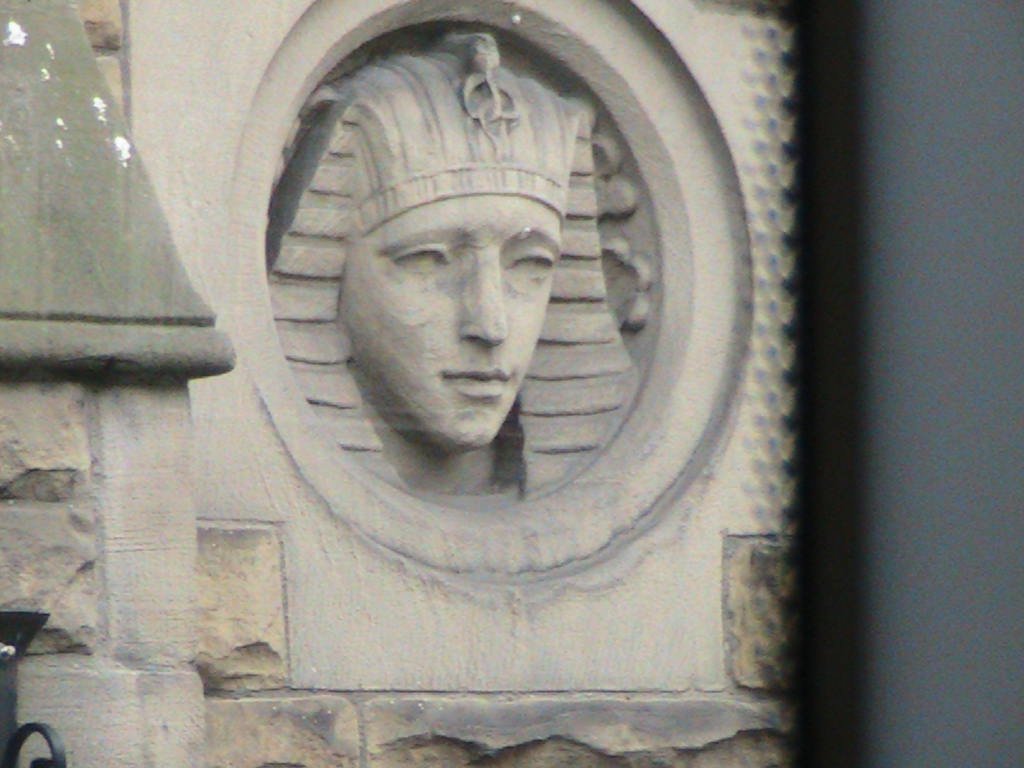
Recent archaeological investigations have revealed sophisticated construction techniques that allowed ancient builders to create such a massive and detailed monument. The original surface was covered with a thin but durable layer of fine limestone that provided the perfect base for the elaborate paint schemes.
This outer coating was applied using advanced masonry techniques that created an almost perfectly smooth surface, allowing artists to paint fine details that would have been impossible on rough-hewn stone. The precision of this work rivals modern construction methods and demonstrates the incredible skill of ancient Egyptian craftsmen who worked without modern tools or equipment.
The Monument’s Changing Identity

As centuries passed, the Sphinx underwent several restoration efforts that changed its appearance significantly from the original design. Different dynasties added their own decorative elements, sometimes covering earlier work with new paint schemes that reflected contemporary artistic styles and religious beliefs.
The Roman period saw particularly dramatic changes, with the addition of new architectural elements and the repair of damaged sections using different materials and techniques. These layered modifications created a complex archaeological puzzle that researchers are still working to unravel, piece by piece revealing the monument’s evolution through thousands of years of continuous use and worship.
The Lost Colors of Ancient Egypt

The Sphinx’s original paint scheme provides valuable insights into ancient Egyptian color preferences and symbolic meanings that have been lost to modern understanding. The specific combinations of pigments used weren’t chosen randomly but followed strict religious and artistic conventions that governed all royal art.
Recent chemical analysis has identified rare and expensive pigments that were imported from distant lands, demonstrating the immense resources devoted to the monument’s decoration. These exotic materials, including lapis lazuli blue and realgar red, would have made the Sphinx one of the most expensive artworks in the ancient world, its colors literally worth their weight in gold.
The Eternal Guardian’s True Purpose

Understanding the Sphinx’s original appearance reveals its true purpose as more than just a monument – it was a living symbol of divine protection that watched over the sacred burial grounds of the pharaohs. The elaborate decorations and realistic features were designed to convince observers that they were in the presence of an actual divine being, not merely a statue.
This psychological impact was crucial to the monument’s function as a guardian, deterring tomb robbers and inspiring reverence among legitimate visitors. The Sphinx’s original appearance was so convincing that many ancient texts describe it as if it were alive, capable of movement and communication with those who approached with proper respect and offerings.
Modern Technology Reveals Ancient Secrets

Today’s advanced imaging technology continues to reveal new details about the Sphinx’s original appearance, with satellite imagery and ground-penetrating radar uncovering hidden features that were invisible to earlier archaeologists. These discoveries are gradually building a complete picture of how the monument looked in its prime.
Computer modeling based on archaeological evidence now allows us to create virtual reconstructions that show the Sphinx as ancient Egyptians would have seen it, complete with colors, decorations, and surrounding landscape. These digital recreations provide unprecedented insights into one of humanity’s greatest artistic achievements.
The Legacy That Continues to Inspire

The Great Sphinx’s original appearance continues to influence art and architecture around the world, with its perfect proportions and symbolic power inspiring countless imitations and interpretations. Modern artists and architects still study the monument’s design principles, learning from techniques that were perfected over 4,500 years ago.
Even in its current weathered state, the Sphinx retains enough of its original power to captivate millions of visitors each year, but knowing how it once appeared adds profound depth to our appreciation of this ancient masterpiece. The monument stands as a testament to human creativity and ambition, a reminder that our ancestors were capable of creating art that transcends time and continues to move us today.
The Great Sphinx’s transformation from a vibrant, golden-hued divine guardian to the weathered limestone monument we see today represents one of history’s most dramatic artistic changes. Through scientific analysis and archaeological detective work, we can now envision this ancient wonder as it truly was – a breathtaking fusion of art, religion, and political power that dominated the ancient world’s imagination. The next time you see photographs of the Sphinx, try to imagine it painted in brilliant colors, adorned with royal regalia, and surrounded by the lush gardens of a sacred complex. Can you picture how different our understanding of ancient Egypt might be if we could witness the Sphinx in all its original glory?




